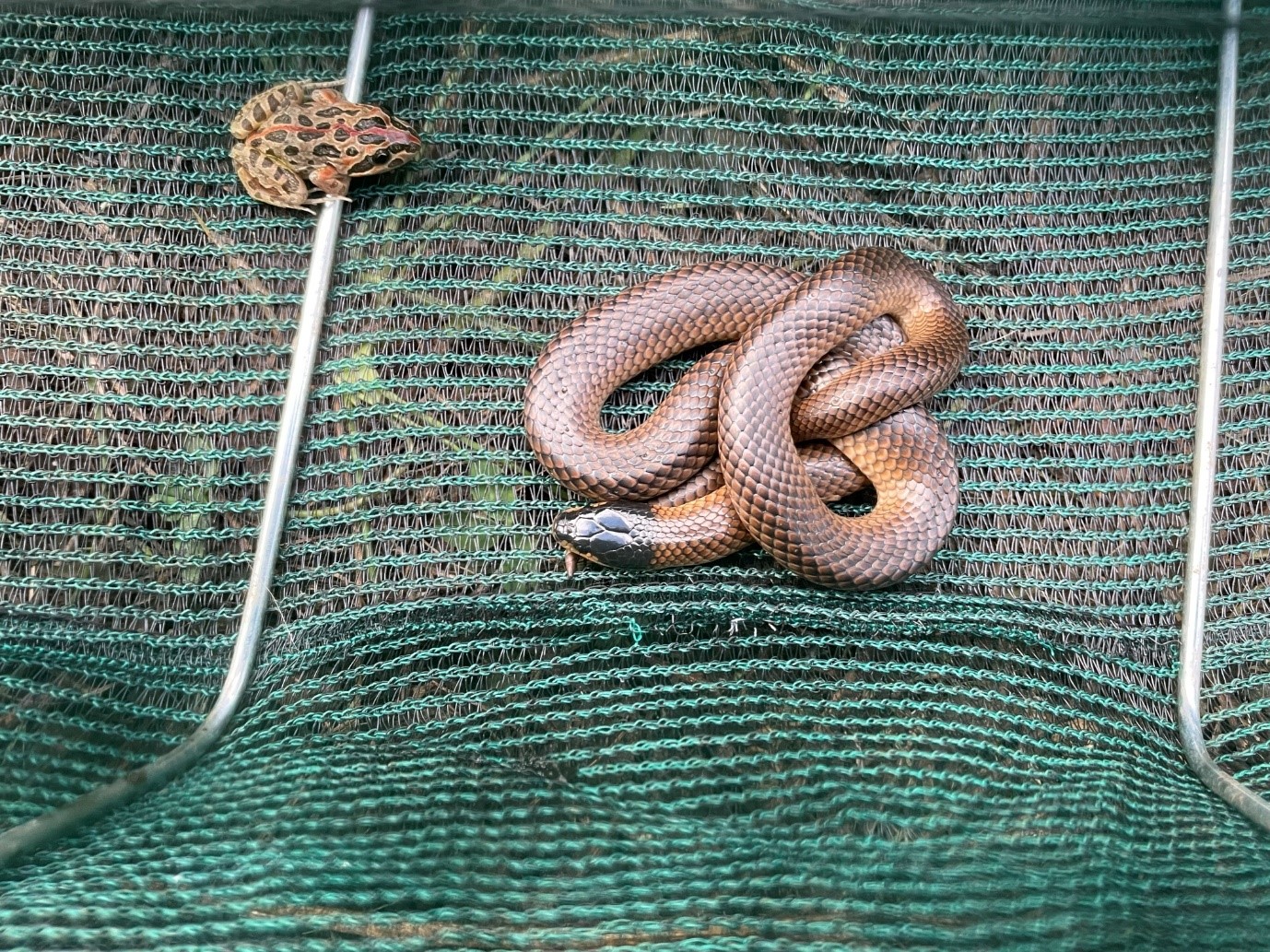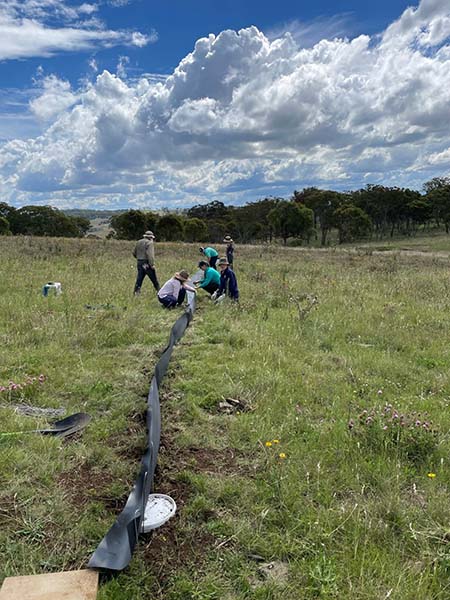As more renewable energy farms pop up across the globe, there’s one question that has gone largely unanswered- what impact are these large-scale farms having on biodiversity?
The University of New England’s (UNE) Dr Eric Nordberg is finding the answer, conducting a pilot study into how renewable energy zones can double as valuable habitat for wildlife.
“We know that land-sharing can work; there are plenty of studies that show the coexistence of biodiversity on grazing landscapes or even crop production under solar panels, however, there are currently no data to show how we can improve these zones to cater for the native wildlife,” he says.

Image: A spotted marsh frog and a Dwyer’s snake captured in a funnel trap at the UNE solar farm as part of the study.
“For example, new data could show us the need for simple changes such as adding rock piles to encourage rock-dwelling species and increase the amount of cover in solar farms.
“I’m also interested in looking at ways to improve vegetation management under solar panels, which will have trickle-down effects on wildlife.”
Taking place at the UNE solar farm on the Armidale campus, Dr Nordberg and his students will survey the wildlife coming into the facility, and compare the species found with those living in the adjacent farmland.

Image: Drift fence trap line in the UNE solar farm. A 30m long temporary fence is dug into the ground to guide animals into interspaced pitfall buckets (20l buckets dug flush into the ground) and funnel traps (picture above) where animals are guided into a trap. Photo by E. Nordberg.
This will help to identify what plant and animal groups are missing from the solar farm, which will add insight into what land management strategies should be implemented to preserve habitats when building these facilities in the future.
“Any large-scale land disturbance will have impacts on biodiversity and we should invest resources to mitigate any negative effects,” he says.
“Solar farms are not really new - there are already thousands of them spread around the world - however, they have slipped between the cracks in terms of ecological monitoring.
“I think we have a great opportunity to lead this research and put UNE on the map, paving the way in landscape management of renewable energies.”
 Having the UNE solar farm on campus means students from a range of disciplines such as Zoology, Environmental Science, Sustainability and Rural Science can get involved in the research, which is a valuable opportunity for them to gain real-world experience.
Having the UNE solar farm on campus means students from a range of disciplines such as Zoology, Environmental Science, Sustainability and Rural Science can get involved in the research, which is a valuable opportunity for them to gain real-world experience.
“The close proximity of the UNE SMART Farms means that even within a two to three hour practical during the week, we can walk to the solar farm or take a short trip to Newholme, Laureldale, or Kirby SMART Farm to allow students to collect data in the field,” he says.
“These hands-on activities are what all the students are here for and they really help build skill sets that will be useful when applying for jobs or continuing into research degrees.”
While it’s still early days, Dr Nordberg hopes to eventually upscale his research by looking at large solar farms in the New England Tablelands and locations with different climates to see if the biodiversity responses change.
“It’s a bit hard to say at this early stage, but ideally, I would love to monitor the progress of recolonisation of wildlife back onto solar farm land over the course of five or more years,” he says.
“To date, we don’t know how long (or if at all) plants and animals will naturally re-establish onto solar farms without introductions by humans.
“I suspect that many species will find their way back in, but those are some of the questions I’m interested to find out – what species recolonise and how long does it take?”


